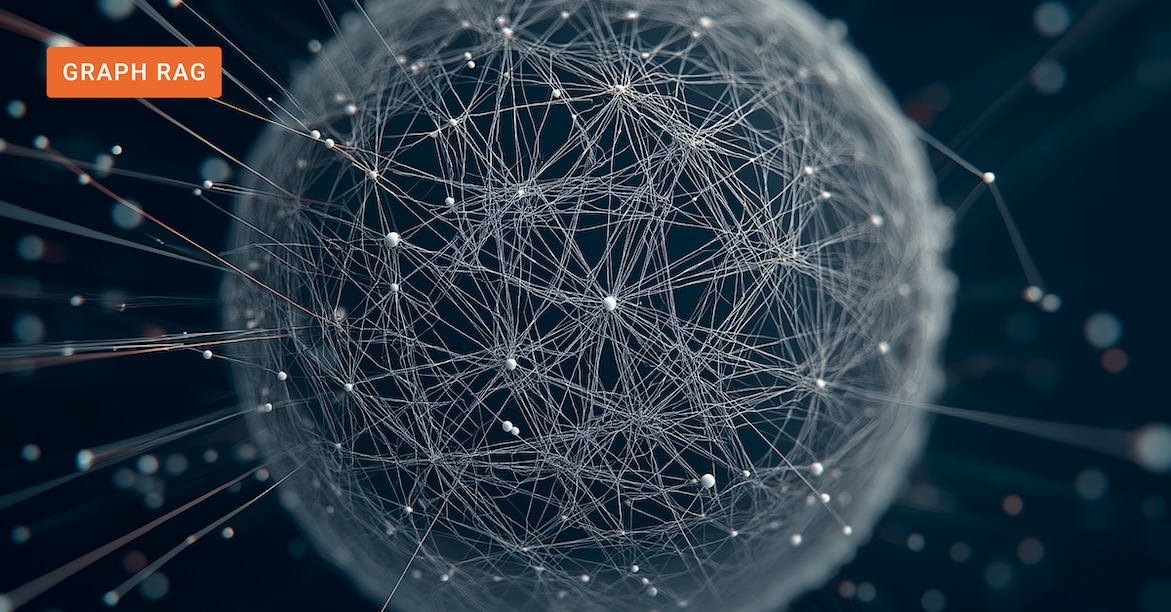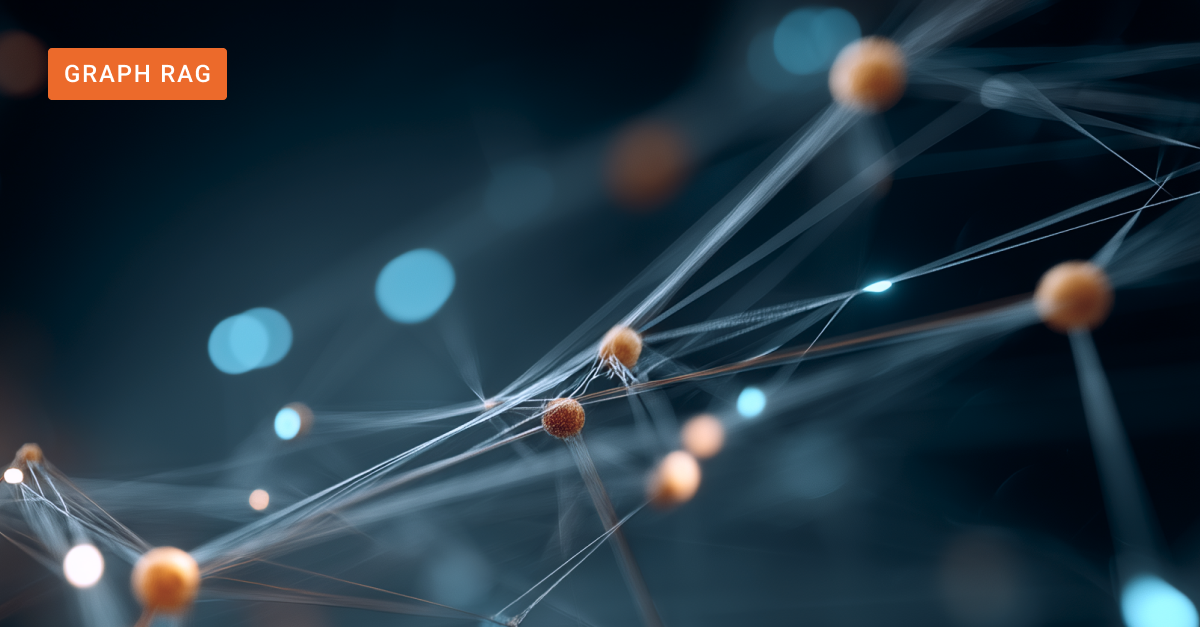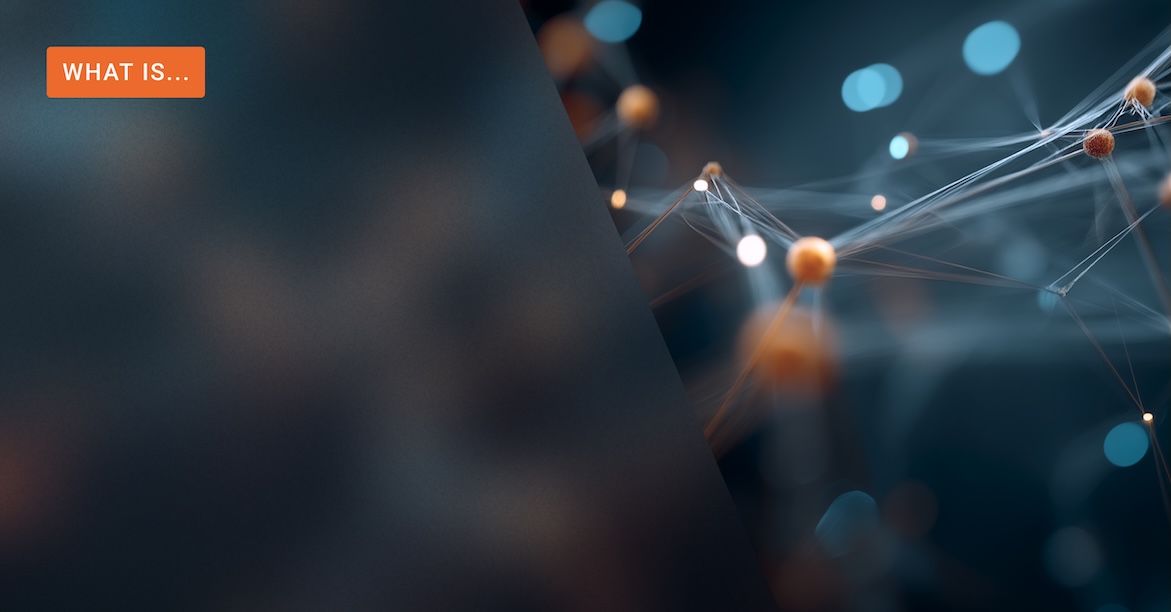Today’s enterprises face a deluge of unstructured data stored in documents, emails, chats, and reports. Despite its immense potential, this "dark data" is too often inaccessible. GenAI promises improvement, but to do so, it needs to overcome some of its limitations: inconsistencies, inaccuracies, and downright "hallucinations" – answers that sound smart but lack a factual basis.
This begs the question: How do you transform your generative AI applications so that they successfully convert your diverse and disparate corporate data into a trusted asset that truly delivers value to your organization? Structured knowledge, in the form of semantic knowledge graphs, are a big part of the answer.
Think of a knowledge graph as a meticulously structured network of facts and their relationships that describes your domain. It’s a framework that provides the clarity, context, and factual grounding that your GenAI initiatives need to deliver reliable, actionable intelligence.
With the success of corporate GenAI initiatives becoming a competitive differentiator, the journey to knowledge-graph powered GenAI is becoming a pressing strategic imperative. To help you speed up adoption, we've put together a concise roadmap for transforming information overload into smart action, enabling your enterprise to harness the full value of enterprise GenAI.
Phase 1: Strategic Alignment & Data Discovery – Laying the Foundation for Knowledge Graph-Powered GenAI
First, let’s zoom out. Before you draw a single diagram or start collecting terms, you need to be clear on your strategic intent. Starting with “why” ensures your knowledge graph initiative aligns with core business objectives.
What specific business problems are you solving with GenAI? Are you aiming to accelerate R&D, enhance customer experience, streamline operations, or mitigate risk? Crucially, how will you measure success? Establish clear metrics for improved content discoverability, faster decision-making, or reduced errors enabled by your knowledge graph.
Cross-functional stakeholder interviews are an effective way to gather insights from leadership, department heads, and end-users to align on goals and identify high-impact use cases.
Next, map your information landscape to understand where your critical data lives. What domains of knowledge – such as products, customers, internal policies, or industries – do you need to capture to inform your GenAI? Consider separating distinct knowledge areas into independent "schemes" within your overall knowledge graph. For instance, a "Products" scheme might be distinct from a "Customer Segments" scheme, but they might need to be interlinked. This modular approach is key for scalability and clarity.
Then, scope the opportunity to understand the project's scale. Knowledge graphs can vary in size and complexity. A simple website navigation taxonomy differs significantly from a comprehensive reference ontology required for sophisticated GenAI applications. Your specific GenAI use cases (e.g., precise content classification, intelligent assistants) will dictate the scope and depth of your knowledge graph.
One way to speed up the process is to gather candidate concepts from existing sources. These might include some or all of the following:
- Legacy taxonomies and existing metadata
- Content samples from documents, emails, and reports to identify frequent terms
- Search query logs that reveal user intent and common phrasing, including unsuccessful searches that highlight knowledge gaps your GenAI needs to fill
- Author-applied keywords defined within your organization
- Third-party taxonomies and ontologies
The output of phase 1 is a clear scoping and design document that will serve as your strategic North Star for building a robust knowledge foundation.
Phase 2: Designing Your "Knowledge Blueprint" – Structuring Data to Power Generative AI
With your strategic compass set, it's time to build the actual framework. This phase transforms your raw collection of candidate terms into a precise, interconnected network of knowledge, making it machine-readable and actionable for your GenAI applications.
First, you’ll want to refine your vocabulary. Deduplicate and disambiguate concepts – for instance, distinguishing "Apple" the fruit from "Apple" the company – so that each unique idea has a clear, well-formatted preferred label. Be sure to capture alternative labels such as synonyms, misspellings from search logs, and various phrasings. This rich vocabulary makes your knowledge graph robust and ensures your GenAI understands diverse inputs, regardless of how a user expresses a query. AI-powered content classification tools, such as the Squirro Classifier, can help expedite this process while ensuring accuracy by keeping a human in the loop.
Next, build the logical framework by organizing concepts into hierarchies based on broader-narrower relationships. For example, "Vehicle" is broader than "Car," which is broader than "Electric Car." This structured approach is the foundation for logical navigation for users and helps GenAI understand the context and relationships between concepts, leading to more intelligent responses. In modern taxonomy management systems, distinct knowledge domains can exist as separate but interconnected schemes, enhancing flexibility and scalability, supporting diverse GenAI use cases across your enterprise.
The output of phase 2 is the core taxonomy and ontology, a structured, refined, and consistent knowledge model, ready to integrate and directly power your GenAI initiatives.
Phase 3: Governance & Evolution – Sustaining Your Knowledge Graph-Powered GenAI Advantage
Phase three is all about nurture: Your knowledge graph isn't a static artifact; it's a living, evolving asset that requires ongoing care, collaboration, and clear oversight. Effective governance ensures its continued accuracy, relevance, and value, which directly impacts the performance and reliability of your GenAI applications.
This impacts admin: To keep your knowledge graph fresh, you’ll need to define ownership and access with clear role-based permissions within your taxonomy and ontology management system. Roles like "Super Administrator," "Taxonomy Editor," "Reviewer," and "Viewer" prevent conflicts, ensure accountability, and protect the integrity of your invaluable knowledge asset that fuels GenAI.
Crucially, you’ll need to manage the lifecycle of your concepts as they move through states like "Candidate," "Approved," "Published," "Withdrawn," and "Deleted." Actively managing these states ensures only validated knowledge is available for GenAI. Similarly, scheme lifecycle and versioning are vital.
Audit trails and working notes are equally essential to document changes, preserve organizational memory, and facilitate the continuous improvement of your GenAI.
The output of phase 3 is a well-governed, evolving knowledge graph, backed by clear roles, secure permissions, and robust lifecycle management processes, ensuring that it is able to power highly reliable GenAI applications.
Phase 4: Activation & Amplification – Unleashing Knowledge Graph-Powered GenAI
Here’s where your investment in building a knowledge graph pays off as the driving force behind GenAI initiatives with deterministic accuracy and reliability. One way to leverage the knowledge is to standardize metadata, power intuitive navigation menus, and enable advanced semantic search that goes beyond keyword matching to deliver truly relevant results.
By using both "push" (exporting) and "pull" (API access) methods, you can establish just the right currency and cadence (e.g., real-time updates for news vs. scheduled releases for highly governed terminology) to ensure your GenAI always works with the freshest, most accurate information.
Moreover, the knowledge graph can help you automate intelligence, using autocategorization to automatically read and classify content, applying knowledge graph concepts at scale. This facilitates precise tagging, intelligent classification, and the extraction of new concepts, creating rich, machine-readable datasets that directly power your GenAI.
Finally, you can supercharge your AI by providing your LLMs the factual grounding they need. Retrieval-Augmented Generation (RAG) is key here, drawing on your knowledge graph to dynamically retrieve the most relevant supporting data and inject it into the LLM's prompt. This ensures:
- Recency & Accuracy: GenAI responses are grounded in your most current, validated enterprise data.
- Transparency & Trust: Your GenAI platform can cite its specific sources, improving explainability and confidence.
- Reduced Hallucinations: The external context from your knowledge graph drastically minimizes the risk of the LLM generating incorrect or misleading information.
Taking it a step further, GraphRAG integrates the rich relationships and inferences from your knowledge graph directly into the RAG process. This enables GenAI to achieve:
- Superior Context & Relevance: By directing the information retrieval process to the most topical information to support a query, regardless of where it is stored, the graph helps ensure more contextually relevant LLM outputs, ensuring more accurate unstructured data discovery.
- Improved Reasoning: GenAI can leverage logical inferences and multi-hop traversals to surface latent insights beyond simple retrieval.
- Transparent Control: Explicit relationships in your knowledge graph provide unprecedented control over GenAI's "thinking," ensuring alignment with your organizational knowledge.
The output of phase 4 is enterprise GenAI that is not only intelligent but also reliable, trustworthy, and deeply integrated into your operational workflows, driving unprecedented levels of insight and automation, all powered by your robust knowledge graph. If you've made it this far, you are now truly GenAI-ready.
Your Path to Smart Action Starts Now
Unlock the shift from information overload to actionable intelligence through the thoughtful development of enterprise knowledge graphs. Following this roadmap – from strategic alignment and meticulous design to robust governance and powerful activation – will transform your unstructured data into your most valuable asset, powering your GenAI initiatives with precision and reliability.
This isn't just about adopting new technology; it's about empowering your teams with the precise, trustworthy information they need to innovate faster, serve customers better, and outperform the competition, all through the intelligent actions of knowledge graph-powered GenAI.
Ready to unlock the true potential of your enterprise knowledge and drive your GenAI strategy forward with confidence?
To delve deeper into the practical methodologies and best practices for this transformative journey, we've prepared a comprehensive resource for you.
Download The Synaptica Guide: A Guide to Developing Enterprise Ontologies, Taxonomies, and Knowledge Graphs.







